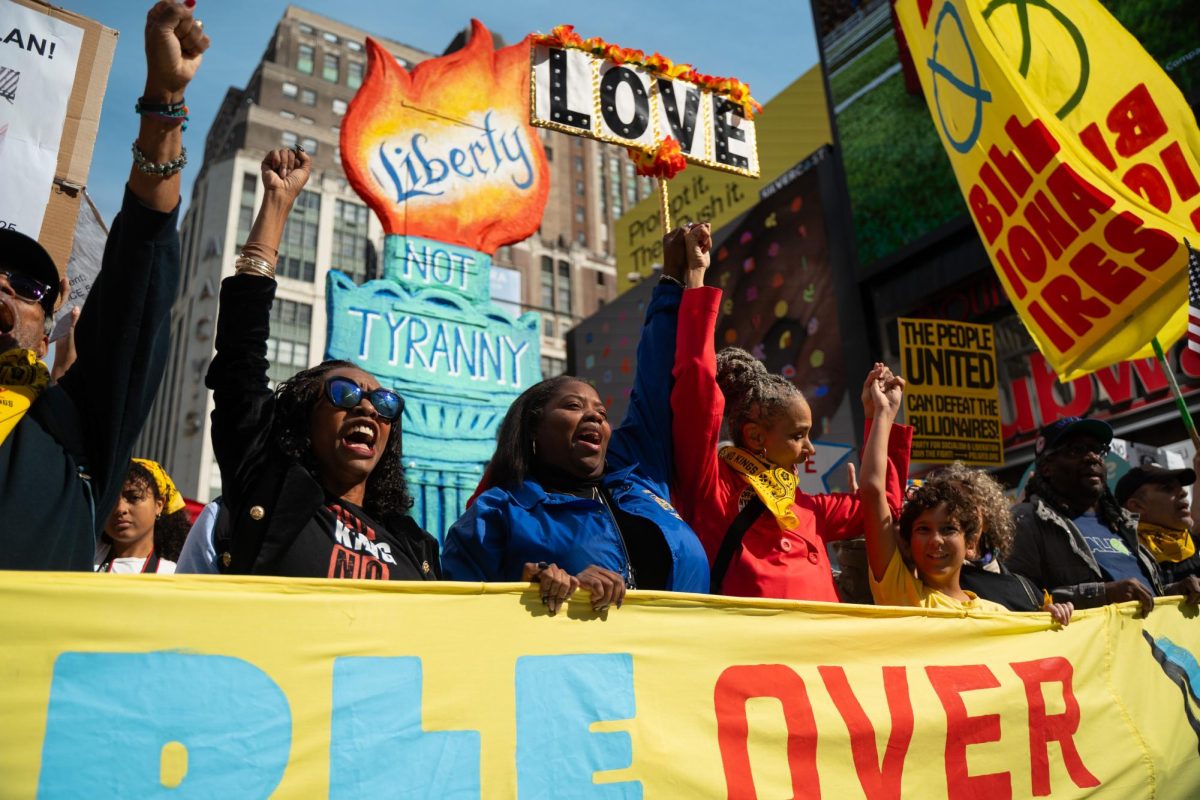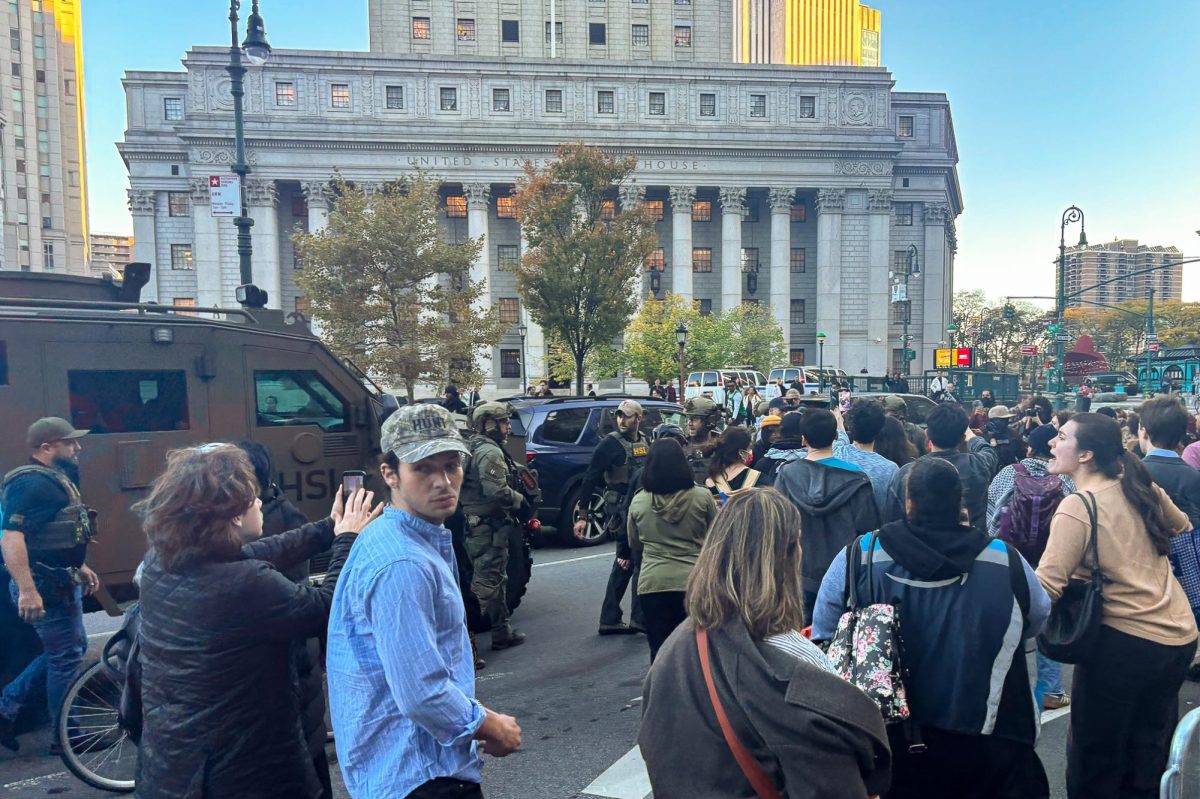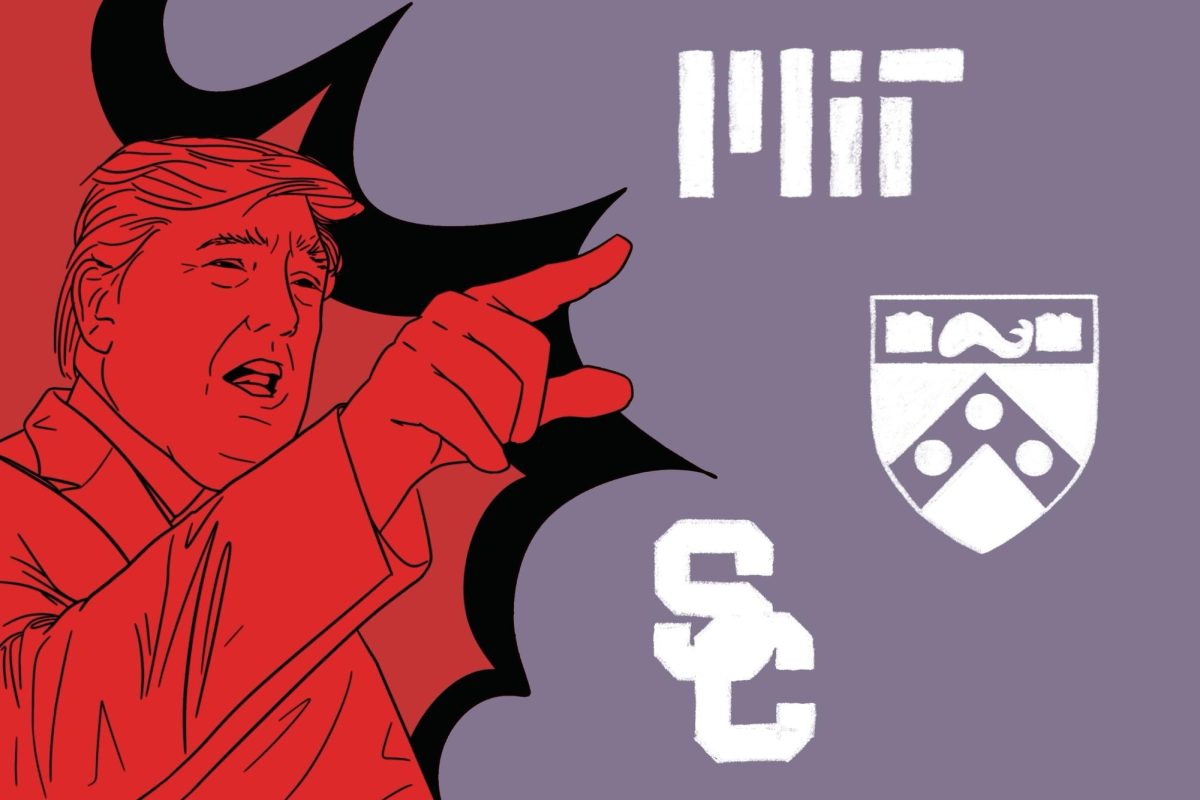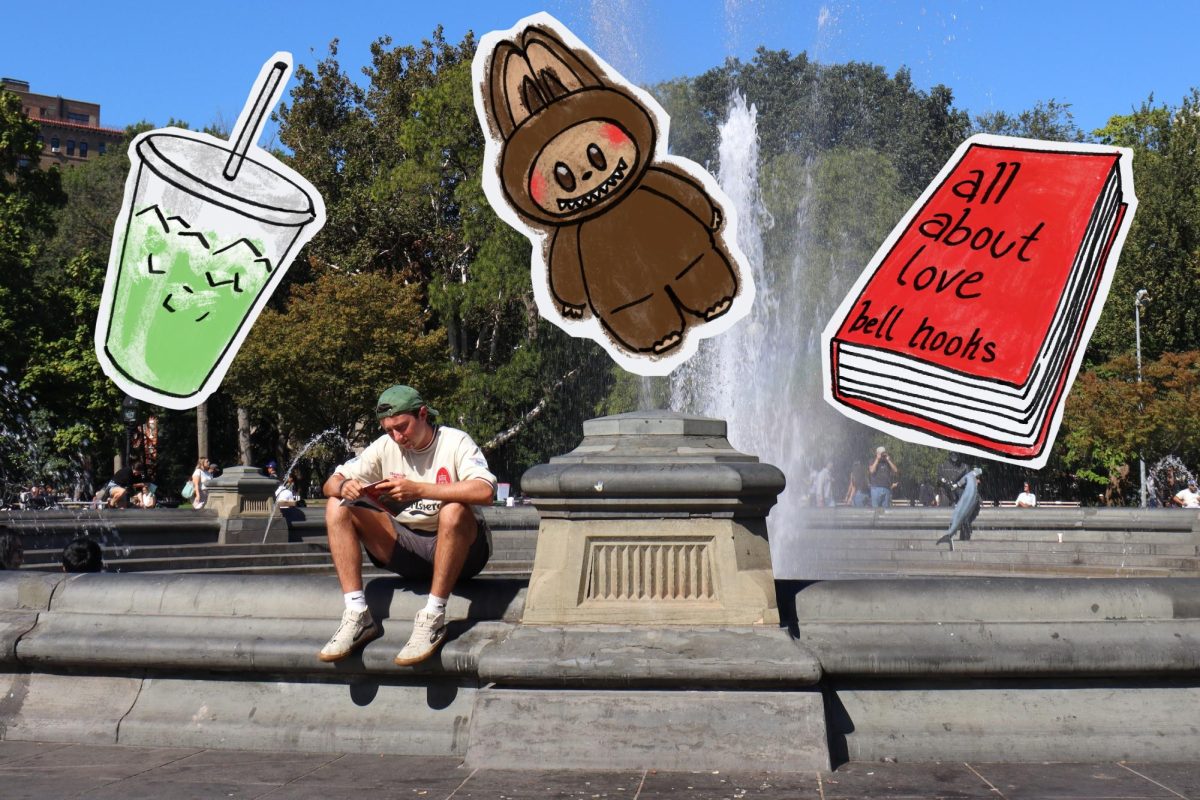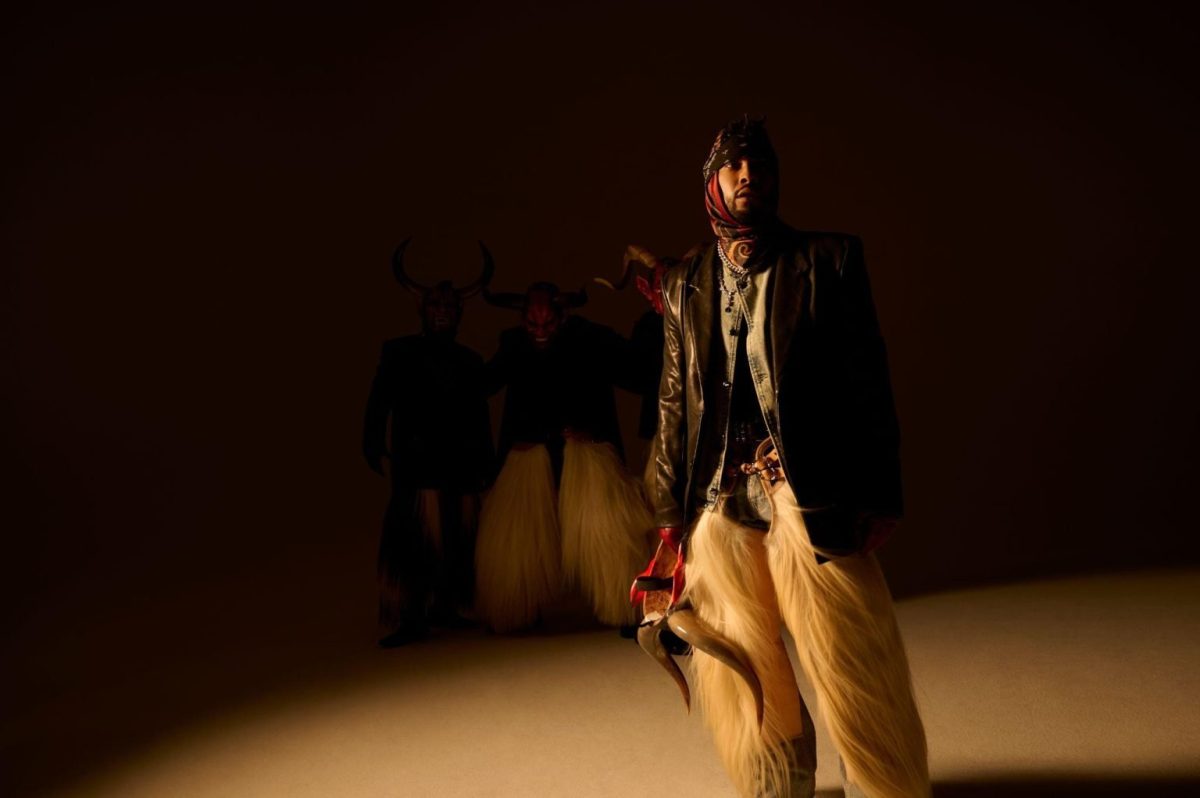Hooked on Eco-Justice with ‘Ghost Fishing’ Exhibit
The new Ghost Fishing exhibit, now on Display in Kimmel Windows.
September 12, 2018
Thirteen poems haunt the corner of LaGuardia Place and West 3rd Street. Encapsulated by windowsills, the verses are part of a recent poetry anthology edited by poet Melissa Tuckey, titled “Ghost Fishing: Eco-Justice Poetry and the Diasporic City.” The display is located just outside Kimmel. With a swift, superficial glance onto the windows, one can visually grasp the key aspects of the entire piece.
The displays of fishnets and blue tarps juxtapose potted plants, combined with words superimposed onto glass, allow even those on the go to engage with eco-positive poetic justice. But WSN peered just a tad longer than your average commuter to gather a fuller sense of the display’s purpose for those paying attention.
The entire display is in artistic conversation with a collection of poetry titled “Ghost Fishing: An Eco-Justice Poetry Anthology.” Additionally, the display is spearheaded by The Department of Art and Public Policy in Tisch, The Individualized Writing Program in Gallatin and Steinhardt’s Art, Education, & Community Practice program.
“Through engagement with the recently released book … plants and images were selected and are being tended to as an artistic response to the words of these generous and thoughtfuls poets,” touts the window display explaining the purpose behind the project.
The main display further details that many of the plants utilized within it hail from Puerto Rico to represent both the environmental crisis faced by the island in the wake of Hurricane Maria last year and the extensively diasporic Puerto Rican community found in New York City. Equipped with this knowledge, overviewing the array of poems and the ensemble of items that encompass their windows becomes especially harrowing.
The use of words are not restricted to simply the poetry embellished on the glass—many literally big words are staked right next to the plants, including “mend,” “rupture,” “lookout,” “witness,” “belong” and “tangled.” The synthesis of words both optimistic and pessimistic help integrate the chaos driven by the words of the actual poetry to the observer.
The poems themselves sting just as much as the intricate displays which cradle them. A number of them point to everyday activities many people participate in—such as the swipe of credit cards and staring at cell phones—while juxtaposing them with descriptions of the natural world—words like valleys, mountains, blossom—to highlight how the two cannot coexist peacefully and one harmfully feeds into the other. These pieces need not blatantly cry out for eco-justice, as the pain and sentiment imbued in their words strike the reader enough to bestow that message more implicitly.
Although many passersby will brusquely wander past this anthology without batting an eye, the “Ghost Fishing” exhibit deserves to lure the willing spectator in, as the contents the various poems discuss have great impacts to both the contemporary and future fabrics of society.
“Ghost Fishing: Eco-Justice Poetry and the Diasporic City” is running from Sept. 10 through Nov. 1 outside Kimmel. For more information, go to www.ghostfishingnyu.info.
Matthew Holman is the Book and Theater Editor. To contact him, email [email protected].












